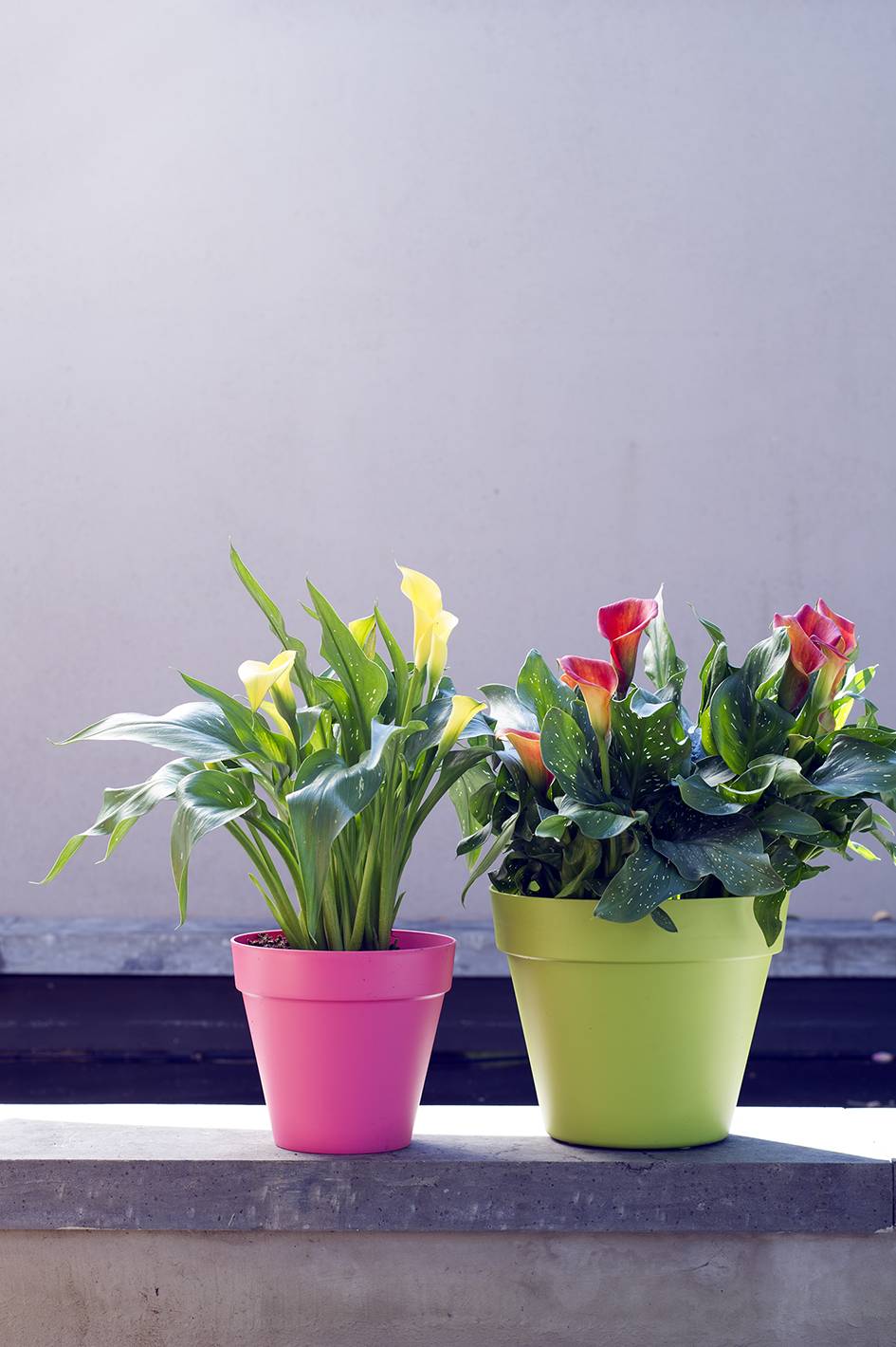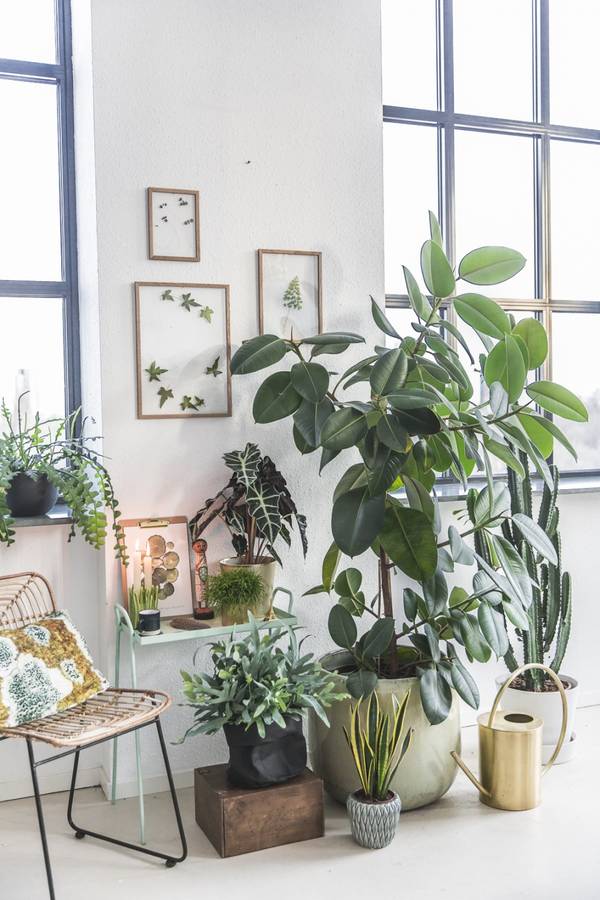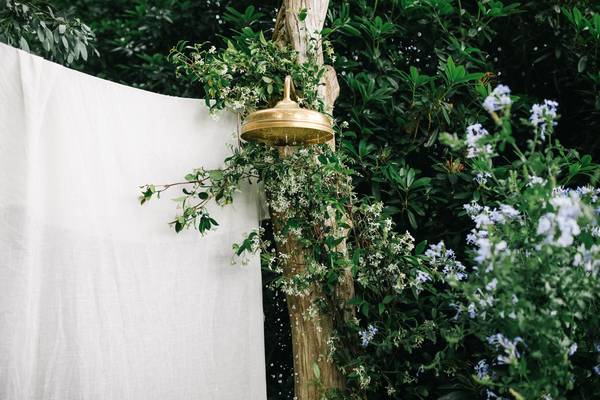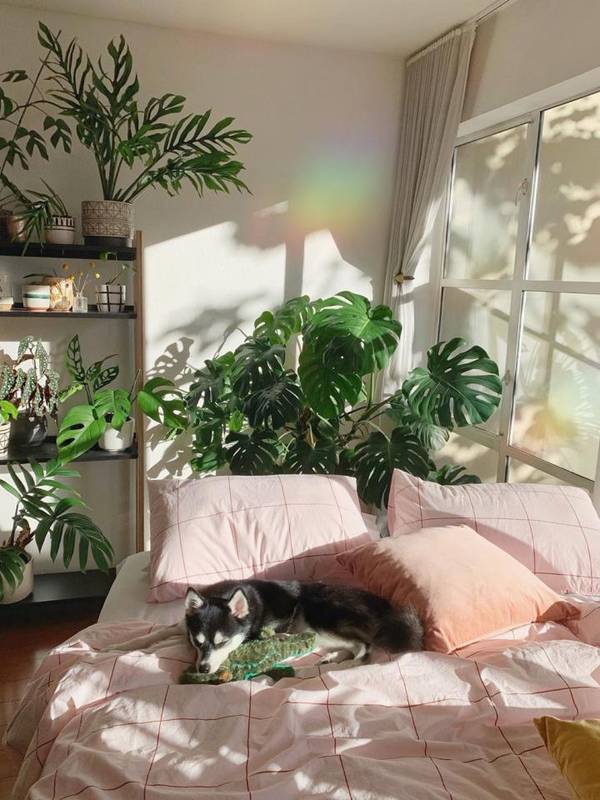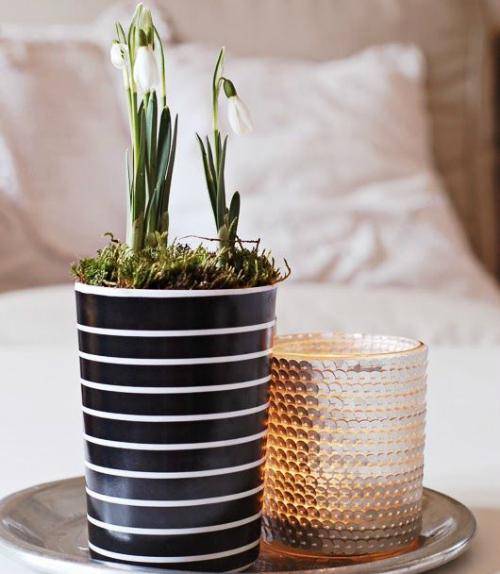
The Calla lily, also known as Zantedeschia, is a garden plant that doubles as a work of art. Amidst the soft green, sometimes spotted leaves, stems arise that bear beautifully styled bracts. The plant is particularly known for its coloured calyxes in white, pink, yellow, red, purple, orange or even nearly black. Don’t think that the calyx is the the plant’s flower, incidentally: the flowers are very small and can be found on the spike.
Care
- The plant likes partial shade at an ideal outdoor temperature of 15°C. In full sun, Calla produces more leaves and fewer coloured calyxes.
- Place the plant in firm potting soil with a bit of clay. The soil can be slightly damp but avoid a footbath.
- A bit of plant food every week boosts the flowering.
- Cut away the brown leaves in order to keep the plant attractive and healthy. Preferably do not cut wilted flowers, but pull them out of the plant complete with the stem.

Origin
Calla lily originates from southern Africa. In the 18th century the plant travelled north with the Italian botanist Giovanni Zantedeschi (hence the name Zantedeschia). In Africa the plant often grows at the bottom of slopes, where it can be nice and swampy thanks to stagnant rainwater. The plant stores that water in its tuber in order to be able to survive dry periods. In your garden or on your balcony this plant does very well in pots and containers. If you’d rather plant it in the soil, place Calla lily near a pond where it’s a bit damp.
Trivia
- Calla lily is sometimes called the goblet plant because the Greek gods are said to have drunk from the calyx.
- In the Victorian language of flowers the Calla lily symbolised eroticism.
- Calla lilies work particularly well in a sleek modern garden.
- Traditionally the plant symbolises purity and sympathy.
- The Calla lily was frequently painted by the artists Georgia O’Keeffe and Diego Riviera.
